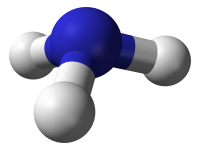
The oldest refrigerant is the ammonia (NH3), a natural refrigerant the use of which has been avoided a good period of time, mainly due to the potential hazards and strict safety rules. It now returns in force with the focus on technical solutions with low polluting potential. Ammonia has a global warming potential below par and the potential thinning of the ozone layer of 0.
It has outstanding thermodynamic properties and is used mainly for large capacity refrigeration systems where the economy resulting from the operation justifies the high cost of investment (compared with the costs of systems based on Freon).
The high costs are due to the toxic composition of ammonia, which requires certain safety measures and more than that, in the ammonia refrigeration systems there cannot be pieces that have copper in composition, ammonia is not compatible with it.
NH3 refrigerating machinery have lower power consumption than those with Freon, so in case of high capacity refrigeration systems, the large initial investment difference pays off relatively quickly.
Here are a few ammonia based projects made by MARCO & ALEX:
- Reinert Braşov (sausage factory, production capacity of 12000 ton/year) project with a freezing capacity of 200 kW and a refrigeration capacity of 1500 kW
- Indcarf Piteşti project that consist of modernizing a cooler that contain 12 freezing cold stores, as well as a production section next to it. The freezing capacity of the system is of 30 kW (with the possibility of extending it to 650 kW), and the refrigeration capacity is of 1000 kW (with the possibility of extending it to 2400 kW)
- Agricola Bacău poultry slaughterhouse with a capacity of 25000 tons of live meat/year and a refrigeration capacity of 2000 kW
The package of services for these ammonia-based refrigeration systems includes the project, certifications as well as the necessary documentation for the ISCIR agreement (under the current rules, this documentation is required to be granted the functioning license).
